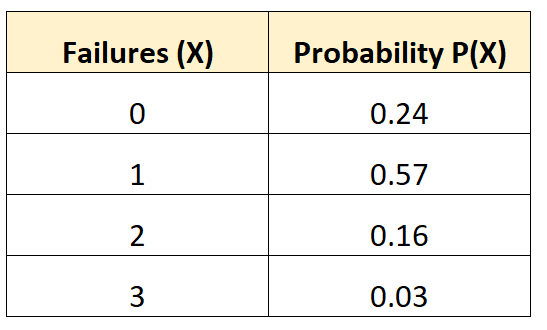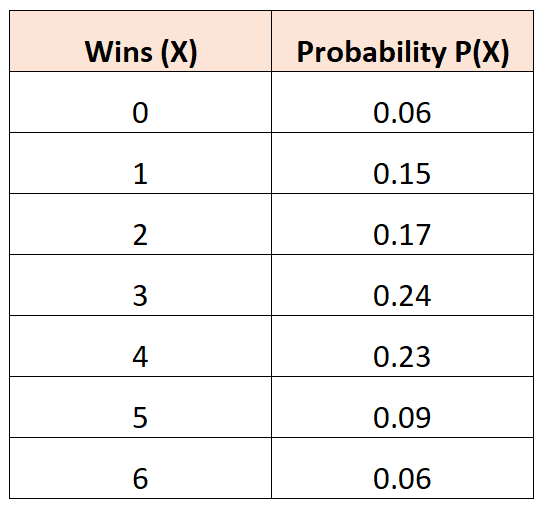A probability distribution tells us the probability that a random variable takes on certain values.
For example, the following probability distribution tells us the probability that a certain soccer team scores a certain number of goals in a given game:

Note: The probabilities in a valid probability distribution will always add up to 1. We can confirm that this probability distribution is valid: 0.18 + 0.34 + 0.35 + 0.11 + 0.02 = 1.
To find the mean (sometimes called the “expected value”) of any probability distribution, we can use the following formula:
Mean (Or "Expected Value") of a Probability Distribution: μ = Σx * P(x) where: •x: Data value •P(x): Probability of value
For example, consider our probability distribution for the soccer team:

The mean number of goals for the soccer team would be calculated as:
μ = 0*0.18 + 1*0.34 + 2*0.35 + 3*0.11 + 4*0.02 = 1.45 goals.
The following examples show how to calculate the mean of a probability distribution in a few other scenarios.
Example 1: Mean Number of Vehicle Failures
The following probability distribution tells us the probability that a given vehicle experiences a certain number of battery failures during a 10-year span:

Question: What is the mean number of expected failures for this vehicle?
Solution: The mean number of expected failures is calculated as:
μ = 0*0.24 + 1*0.57 + 2*0.16 + 3*0.03 = 0.98 failures.
Example 2: Mean Number of Wins
The following probability distribution tells us the probability that a given basketball team wins a certain number of games in a tournament:

Question: What is the mean number of expected wins for this team?
Solution: The mean number of expected wins is calculated as:
μ = 0*.06 + 1*.15 + 2*0.17 + 3*0.24 + 4*.23 + 5*.09 + 6*.06 = 2.94 wins.
Example 3: Mean Number of Sales
The following probability distribution tells us the probability that a given salesman will make a certain number of sales in the upcoming month:

Question: What is the mean number of expected sales for this salesman in the upcoming month?
Solution: The mean number of expected sales is calculated as:
μ = 10*.24 + 20*.31 + 30*0.39 + 40*0.06 = 22.7 sales.
Bonus: Probability Distribution calculator
You can use this calculator to automatically calculate the mean of any probability distribution.